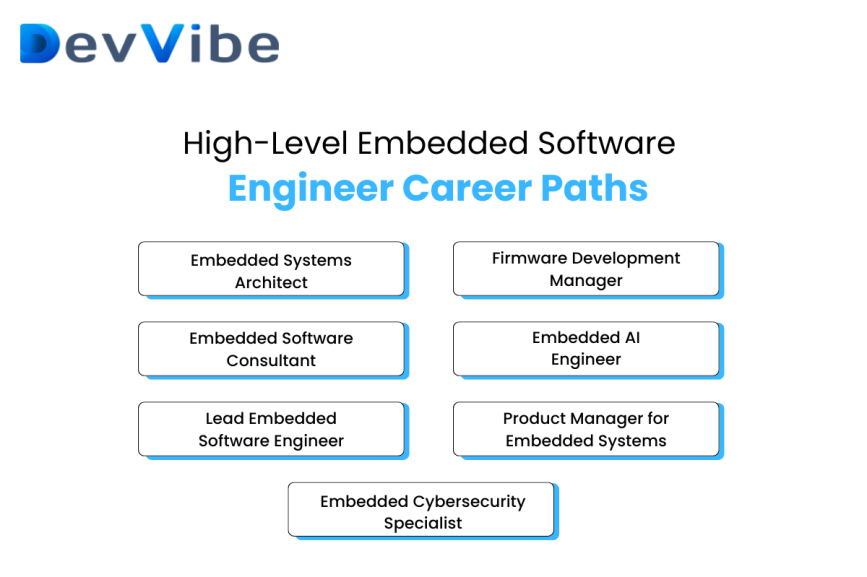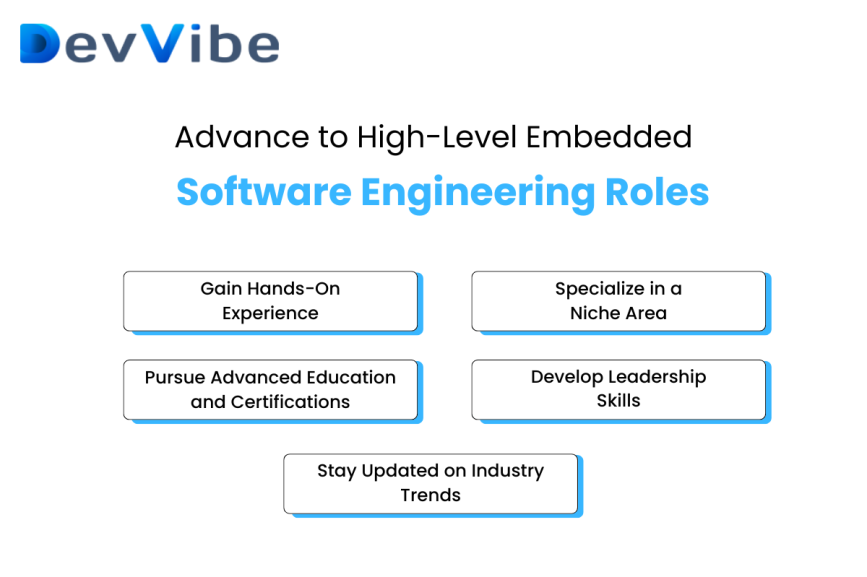
Are There More High-Level Embedded Software Engineer Career Paths?
Embedded software engineering is a fascinating field that blends hardware and software expertise to create systems embedded in various devices, from consumer electronics to industrial machinery. As technology advances, so do the demands and opportunities for embedded software engineers, particularly those in high-level positions. But are there more high-level embedded software engineer career paths emerging, and what do these paths entail?
In this article, we’ll delve into the field of embedded software engineering, explore high-level career paths available, and discuss how engineers can advance their careers in this ever-evolving domain.
Embedded Software Engineering
Embedded software engineers work on software that operates within specialized devices and systems, often designed for specific functions. Unlike traditional software that runs on general-purpose computers, embedded software is integral to hardware. This field is critical in industries such as automotive, aerospace, healthcare, telecommunications, and consumer electronics.
High-level embedded software engineering roles are generally distinguished by advanced technical skills, deep industry knowledge, and experience in managing projects or teams. With technology’s rapid evolution, the demand for experienced professionals in this field is growing, resulting in a wide array of high-level career paths.
High-Level Embedded Software Engineer Career Paths
The career paths for embedded software engineers are varied and offer numerous opportunities for specialization, leadership, and innovative contributions. Here are some of the prominent high-level roles and career directions that embedded software engineers can pursue:
Embedded Systems Architect
An embedded systems architect is responsible for designing and overseeing the architecture of complex embedded systems. This role involves working closely with both hardware and software teams to ensure that the design meets performance, cost, and reliability goals. Architects make critical decisions on software structures, integration, and the choice of hardware.
Key Responsibilities:
- Define system architecture and specifications.
- Evaluate technology options and choose components.
- Oversee system integration and manage dependencies between hardware and software.
As a high-level embedded software engineer, a systems architect must have a deep understanding of embedded systems and strong leadership skills to guide a team through complex projects.
Firmware Development Manager
Firmware development managers lead teams that develop firmware for embedded systems. This role combines technical expertise with team management, requiring engineers to coordinate the development process, from design through testing and implementation. Firmware managers ensure quality and adherence to project deadlines.
Key Responsibilities:
- Oversee the development and maintenance of firmware.
- Work with other departments to meet hardware and software specifications.
- Manage team resources, schedules, and project milestones.
For engineers interested in both management and technical work, the firmware development manager role is an ideal high-level embedded software engineer career path.
Embedded Software Consultant
Embedded software consultants work on a project or contract basis, advising companies on best practices, architectural decisions, and optimization strategies. This role allows engineers to apply their expertise across multiple industries and projects, making it a great choice for those who enjoy varied work environments and challenges.
Key Responsibilities:
- Provide specialized guidance on embedded software solutions.
- Conduct system audits, troubleshoot issues, and optimize performance.
- Stay updated on industry trends and innovations to advise clients effectively.
The consulting career path is flexible and often lucrative, making it an attractive option for experienced engineers seeking high-level, independent roles.
Embedded AI Engineer
With artificial intelligence (AI) becoming more integral to embedded systems, the role of the embedded AI engineer is gaining prominence. These professionals integrate AI algorithms and machine learning models into embedded systems, enabling devices to perform complex tasks autonomously.
Key Responsibilities:
- Develop and optimize AI models for embedded devices.
- Collaborate with data scientists and hardware teams to implement AI solutions.
- Address challenges like limited memory and processing power in embedded environments.
The embedded AI engineer path offers exciting prospects for engineers interested in cutting-edge technology, particularly those looking to expand their skills in artificial intelligence and machine learning.
Lead Embedded Software Engineer
Lead embedded software engineers oversee development teams and are deeply involved in designing, coding, and testing software for embedded systems. This role requires a mix of technical and leadership skills, as lead engineers guide the team while also contributing to critical development tasks.
Key Responsibilities:
- Lead a team of developers in the design and implementation of software.
- Mentor junior engineers and foster skill development within the team.
- Ensure adherence to industry standards and project requirements.
The high-level embedded software engineer career path of a lead engineer offers growth in both technical and management expertise, providing engineers with a blend of hands-on development and team leadership experience.
Product Manager for Embedded Systems
Product managers for embedded systems work closely with engineering, marketing, and sales teams to ensure that products meet market needs and align with the company’s strategic objectives. This role requires strong communication skills and an understanding of both technical details and business priorities.
Key Responsibilities:
- Define product requirements and development goals.
- Coordinate with engineering teams to ensure timely delivery.
- Analyze market trends and customer feedback to shape product direction.
Transitioning to a product manager role allows engineers to leverage their technical background while expanding into business strategy, making it an excellent path for those interested in high-level roles beyond pure engineering.
Embedded Cybersecurity Specialist
With the rise of IoT and connected devices, cybersecurity has become a critical aspect of embedded software engineering. Embedded cybersecurity specialists focus on protecting systems from vulnerabilities, making this a high-level, highly specialized role.
Key Responsibilities:
- Identify and mitigate security risks within embedded systems.
- Develop security protocols and encryption techniques.
- Collaborate with developers to ensure compliance with security standards.
Cybersecurity in embedded systems is a growing field, offering opportunities for engineers to specialize in security practices and standards—a crucial skill set in today’s connected world.
How to Advance to High-Level Embedded Software Engineering Roles
Reaching a high-level embedded software engineering position requires continuous learning, skill-building, and strategic career moves. Here are some tips for advancing in this field:
Gain Hands-On Experience
Experience is invaluable in embedded software engineering. Working on diverse projects allows engineers to build a portfolio of skills across various embedded platforms and environments, making them more attractive candidates for high-level roles.
Specialize in a Niche Area
Focusing on a particular aspect of embedded engineering, such as AI, cybersecurity, or real-time systems, can make you a sought-after expert in that domain. Specializing helps differentiate you and positions you for roles that require advanced knowledge and expertise.
Pursue Advanced Education and Certifications
Master’s degrees and certifications in areas like embedded systems, cybersecurity, or project management software can help engineers qualify for high-level roles. Certifications signal to employers that you are committed to professional growth and equipped with relevant skills.
Develop Leadership Skills
High-level roles often involve managing teams or projects. Building leadership skills through mentoring, team projects, or formal training programs can prepare engineers for roles like team lead or project manager.
Stay Updated on Industry Trends
The field of embedded engineering is evolving with new technologies and methodologies. Staying informed on trends, such as the use of AI in embedded systems or advancements in IoT security, allows engineers to remain competitive and adapt to emerging career paths.
Future Prospects for High-Level Embedded Software Engineers
The demand for embedded software engineers continues to rise, and with it, the opportunities for high-level career paths. As devices become more connected and AI-driven, the need for expertise in specialized areas like cybersecurity, AI integration, and system architecture will grow.
Companies in industries such as automotive, healthcare, and consumer electronics are increasingly seeking skilled engineers to lead innovative projects, creating a promising landscape for those aspiring to high-level embedded software engineering roles. By building a blend of technical, leadership, and industry-specific skills, embedded software engineers can unlock numerous career paths and advance to high-level positions that drive technological progress.
Conclusion
In summary, are there more high-level embedded software engineer career paths? Absolutely. With the rapid advancement in technology and the increasing demand for expertise in specialized areas, embedded software engineers have a wealth of opportunities to pursue rewarding, high-level careers across various industries.










